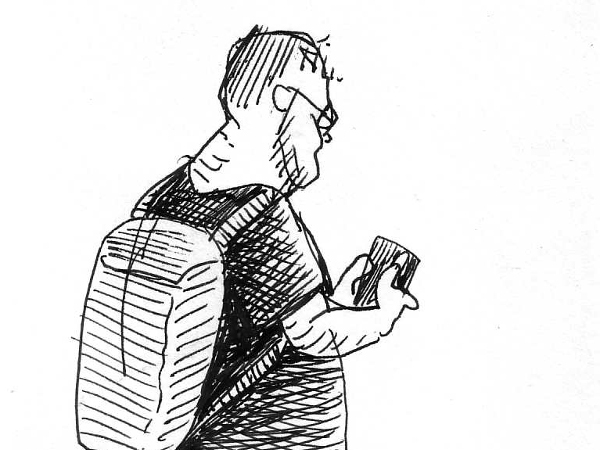Illustrator Si Smith, talks about his process of story creation and the events that have influenced him.
A few years ago I was part of a group who came together for a bit of mutual support and shared learning. Quite early on in our meet-ups, the word ‘Journey’ was banned. We scorned it – such a lazy cliché; banal; it’s meaning all emptied-out through casual over-use.
Scrabbling around for alternatives, we tied ourselves in linguistic knots (talking about “My Trajectory” or being on “A Pathway” or sharing “Our Ongoing Story”?!) before succumbing to the inevitable, and ‘Journey’ was allowed back in the room.
And maybe there’s a good reason that we have to talk about journeys.

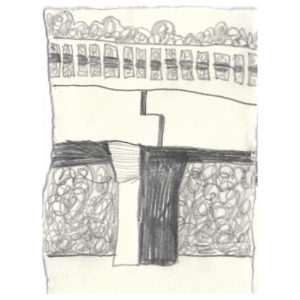
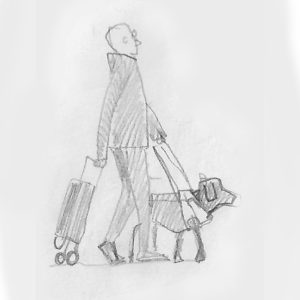
In his excellent book ‘Into The Woods’, screenwriter John Yorke tells us that “…storytelling is an indispensable human preoccupation” and that, “we render all experience into story.”
Broadly speaking, Yorke’s thesis is that narratives all bend towards (or seek to invert) one definitive arc – the journey into the woods, where dark truths are encountered and conflict happens; followed by the journey back, bringing home new wisdom, experience and learning.
And so every story is the tale of a Journey – and Story is the way that we make sense of our lives. We’re building narratives all the time. We’re hard-wired that way*.
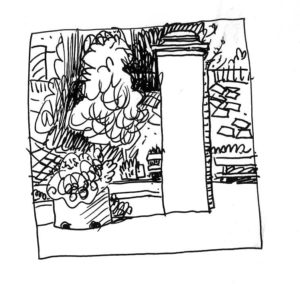


When you think about it in church terms, all your rituals and ceremonies – they’re all journeys.
Walk the labyrinth and you travel in – to its heart for the mystery of a meeting with God – and then back out to live your life intentionally in the light of that communion.
It’s the same adventure with the Eucharist.
And back in the day, Ascetics wandered out into the wilderness to face their demons and returned enlightened.
Walk the stations of the cross, and you’re journeying with Christ to Golgotha and the tomb.
It’s all a pilgrimage, even if you don’t realise it.
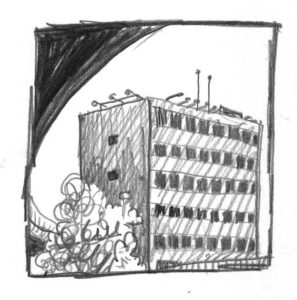
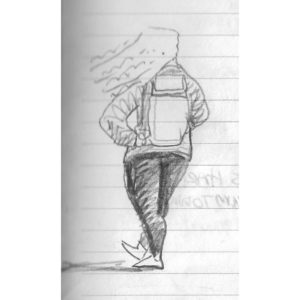
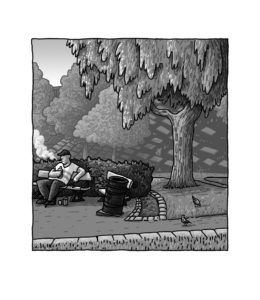
And I don’t think that I realised quite what I was doing when I started making work with LCI.
Whole chunks of our first comic together (‘How To Disappear Completely’ – since republished by Valley Press) were dreamt up whilst I pedalled away on the exercise bike. I was literally going nowhere, but the story was off and running, sometimes so fast that it was hard to keep up with it…
Later in the process, I’d hop on the 13A bus into Leeds, purposefully looking for the places that story could happen. Sometimes I’d travel in knowing exactly what I was after – I’d go and draw and photograph specific places, buildings, public artworks – whereas at other times it was more of an open-ended thing – I was searching, exploring, imagining, discovering…
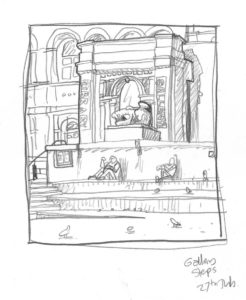
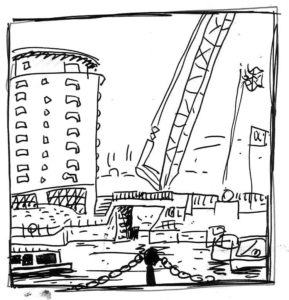
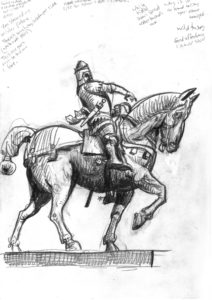
In my most recent comic, ‘Signs’ the protagonist observes that everyone is, “always on the way to somewhere else, and never really here.”
Maybe the sheer pace of life now, and the expectation on us to be demonstrably and economically productive renders most of our physical journeys little more than an inconvenience to be endured. They just represent dead time – frustrating obstacles separating us from our very important destinations.
But I’ve been trying to use my journey times more fruitfully.
So the liminal space of the bus or the passenger seat of the car becomes a place to draw -I’ve crammed countless notebooks with drawings of landscapes and roadside furniture observed out through windows**; and I’ve surreptitiously sketched hundreds of my fellow Firstbus pilgrims.
Meanwhile, many of those people have found their way into the pages of the comics, populating the streets, panels and frames of my Leeds.
There’s something important for me in that – it’s difficult to find the right words without sounding pompous, but there’s something kind-of-devotional about this intentional act of drawing Leeds and its people. Someone once described my comics as “love letters to Leeds”, and I like that idea very much. To me, the work that I make is a way of celebrating this place and its inhabitants.
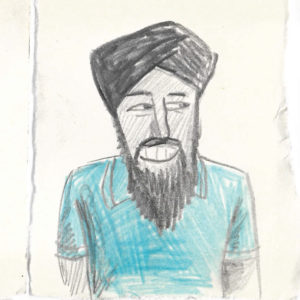
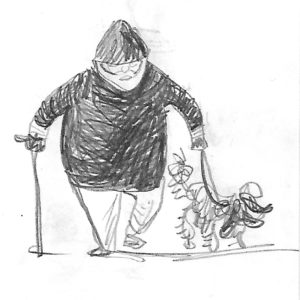
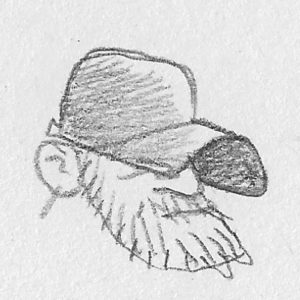
Now, of course, there are some journeys that you don’t choose to make.
Life will take an unexpected course and leave you with little choice but to follow its new path – narrow, less travelled, rockier maybe. Into the woods.
In the Autumn of 2017, while I was making ‘Abide With Me’ (the second of my three LCI comic projects) my mum was diagnosed with secondary, terminal cancer.
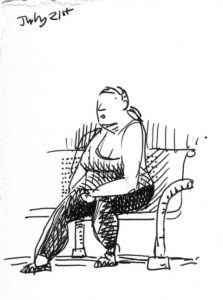

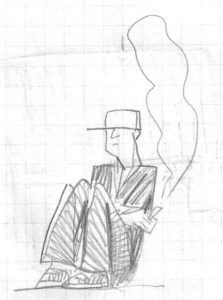
And so back in December last year, I made a couple of train-and-bus trips out to Norfolk to be with her and to say goodbye.
Of course, those journeys were pregnant with significance already – you don’t need to invest a trip like that with additional meaning or intent.
This was a new emotional space for us to navigate. And those journeys – out and back – gave me a transitional space where I could begin to process stuff and to focus on the things that really matter; a place to explore the flex of softening-up-and-steeling-myself; a somewhere – just me, in-between and anonymous – where I could start opening up to Grief.
Also on those trips out East, I drew; doing some fairly significant work on the final chapters of ‘Signs’ in the process. Pulling apart the way that I’d planned for the story to end and reconfiguring things; rethinking page layouts and panels and searching for a better way to end it. Balancing things, reordering and restoring them. And then at the end, by my mum’s bedside in the hospital, I drew. Her hospital bed and furniture from her ward are there in ‘Signs’ too.
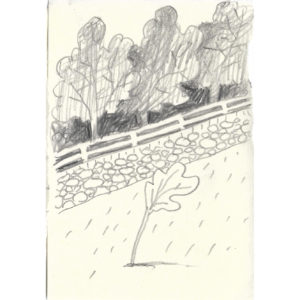
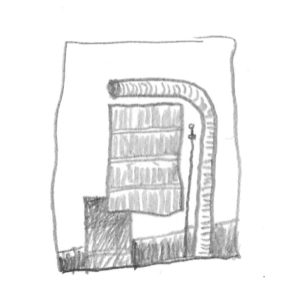
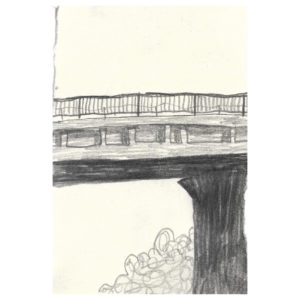
Now, as I look back across the work that I’ve made with LCI, I see a very clear reflection of our family’s journey into my mum’s illness; her death and our mourning. In the preoccupations and concerns of those comics – in the words and the lines and the colours and the layout of the panels. That’s me, out in the woods, wrestling with questions of mortality and working through my feelings of loss. Right there on the page.
And so I’ll end where I started, with a TS Eliot quote…
“We shall not cease from exploration, and the end of all our exploring will be to arrive where we started and know the place for the first time.”
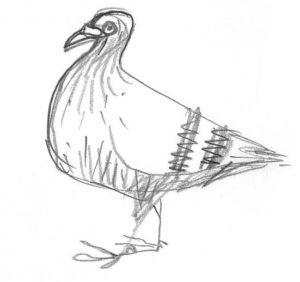
*“It sounds simplistic to say that ordering is at the root of storytelling, but ordering is absolutely about how we navigate the gap between our inner selves and the outer world.”
John Yorke, ‘Into The Woods’
** I’ve been doing this since 2010, when I set myself the (possibly ill-advised) task of making a lino print of every bus trip that I made that year – https://2010ayearofbustrips.blogspot.com

